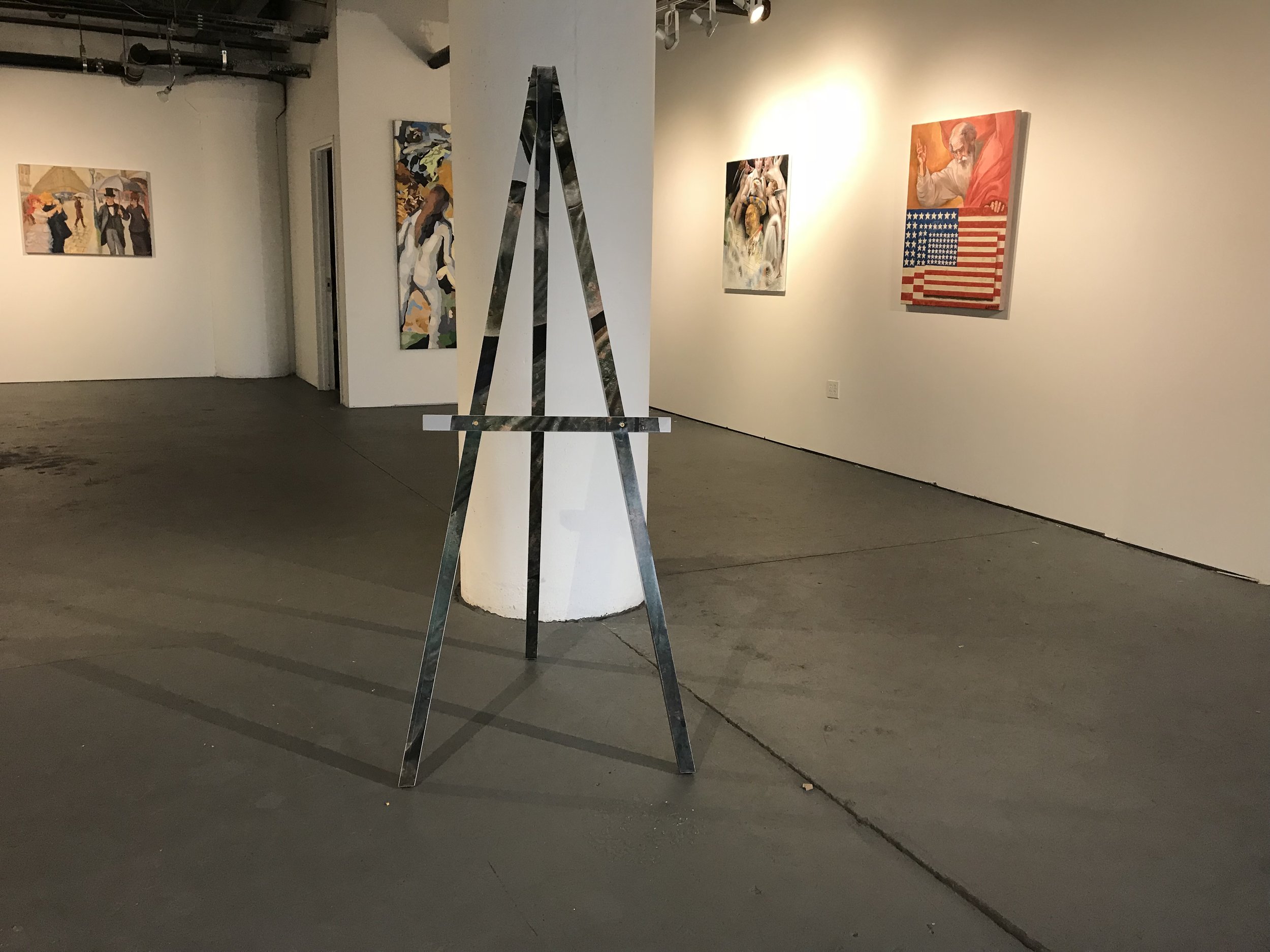
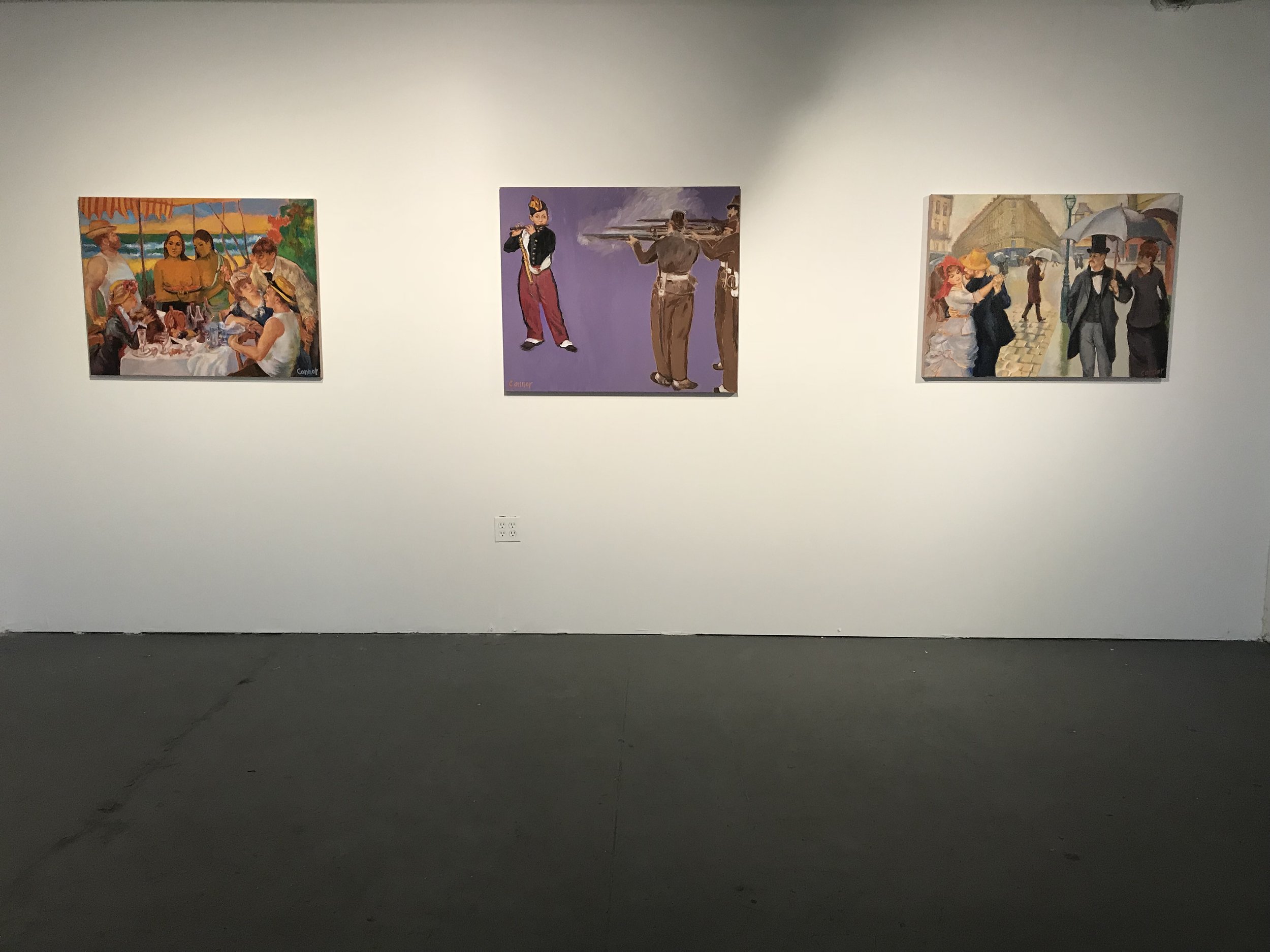
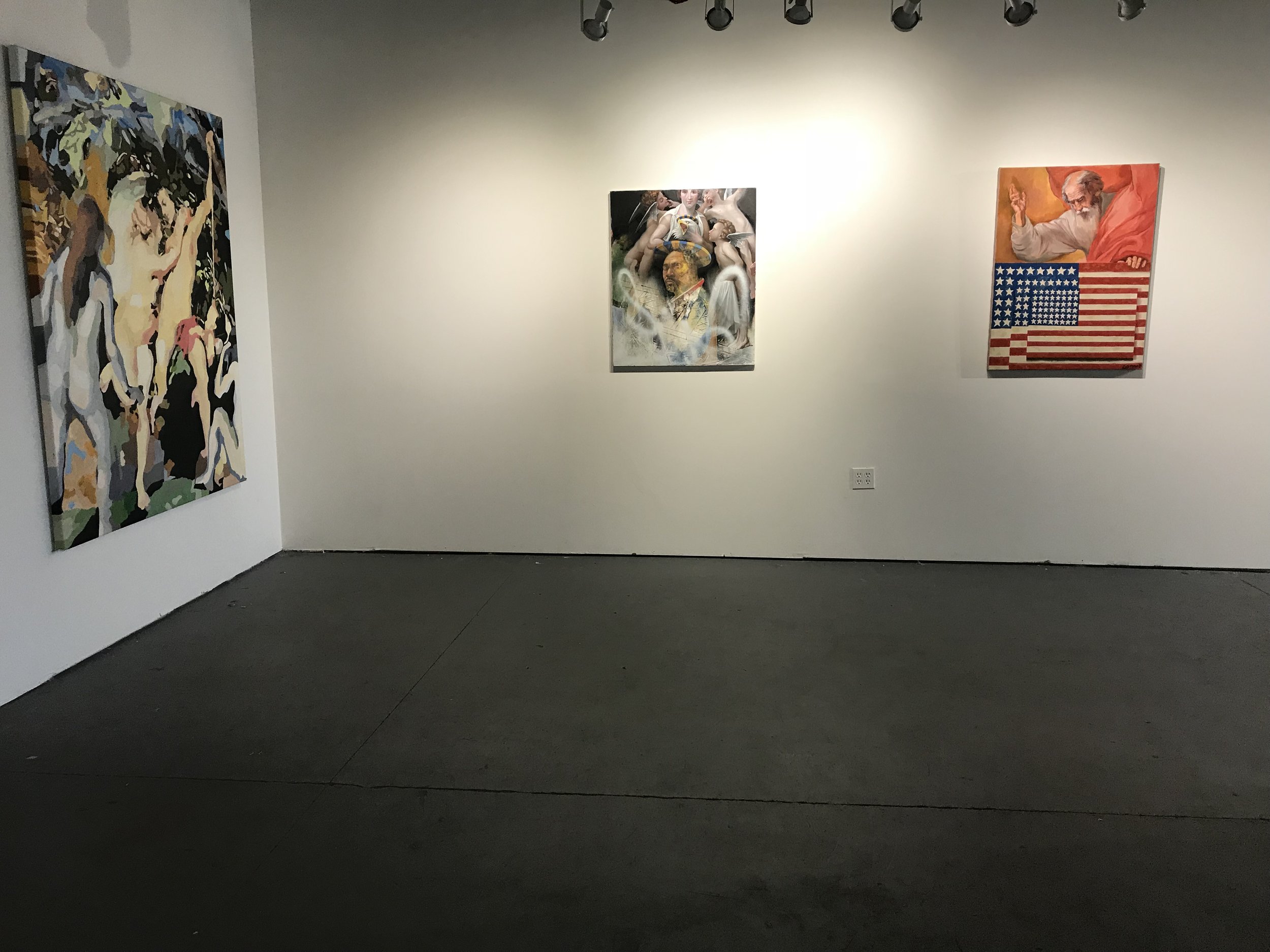
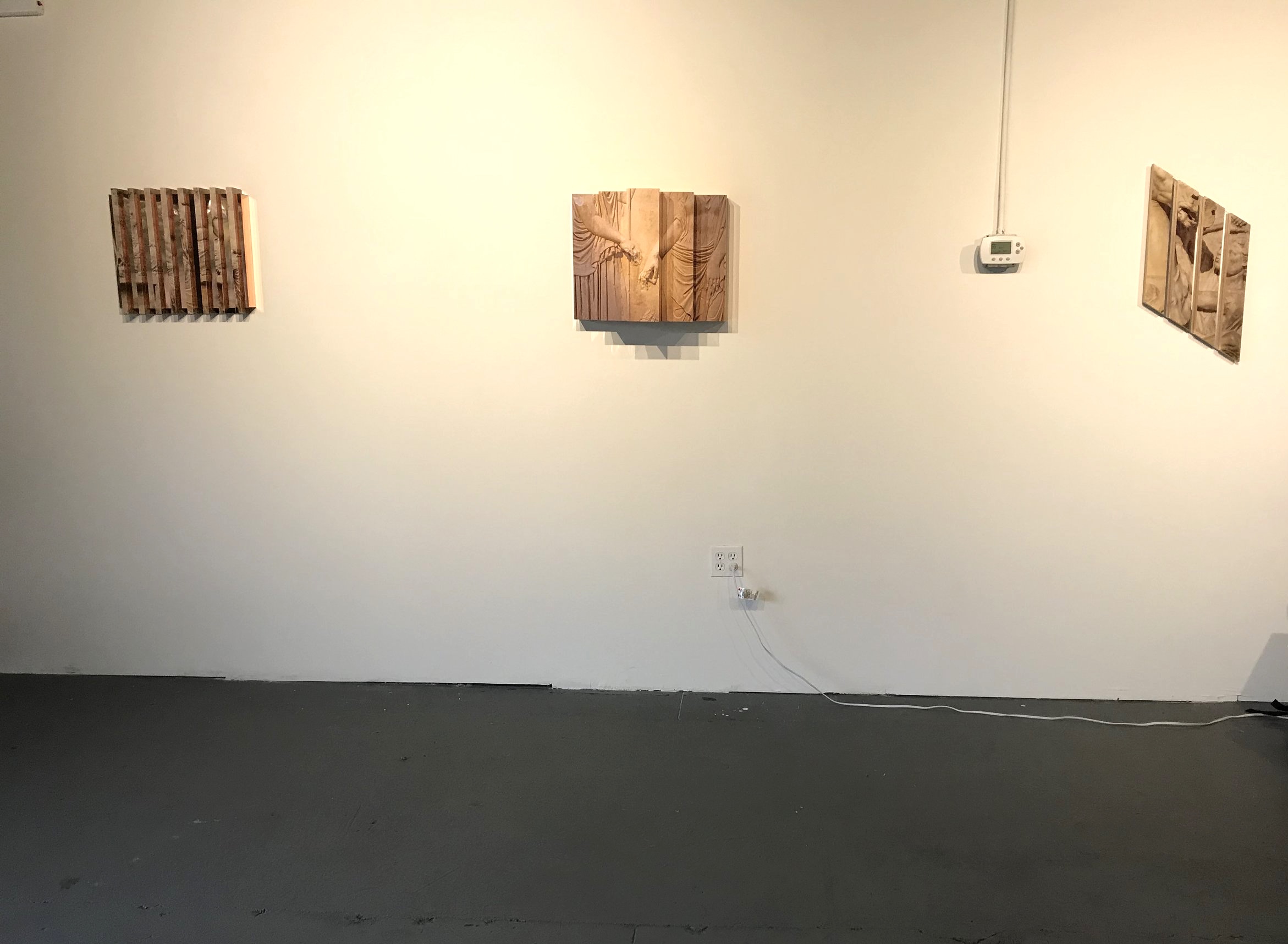
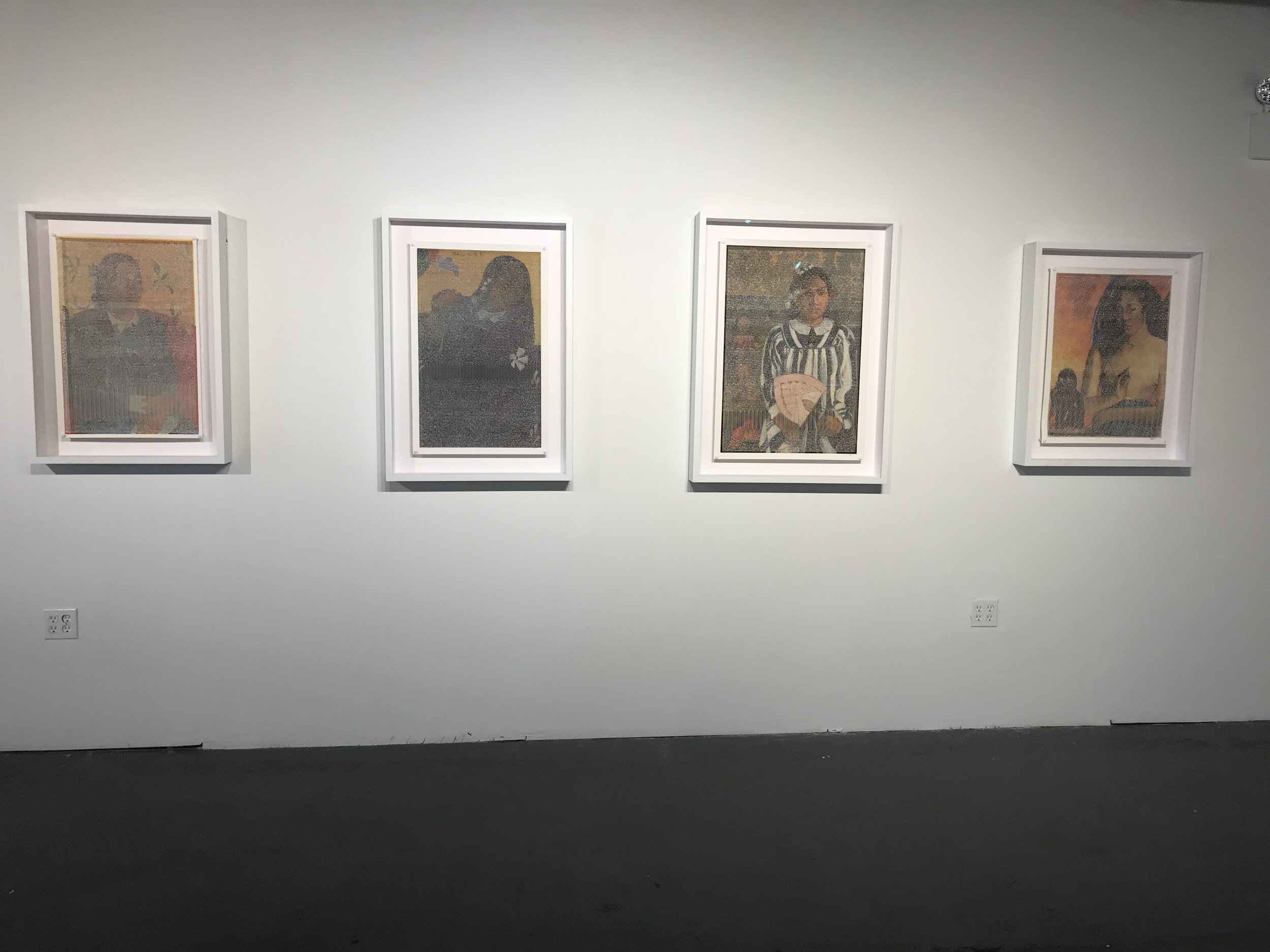
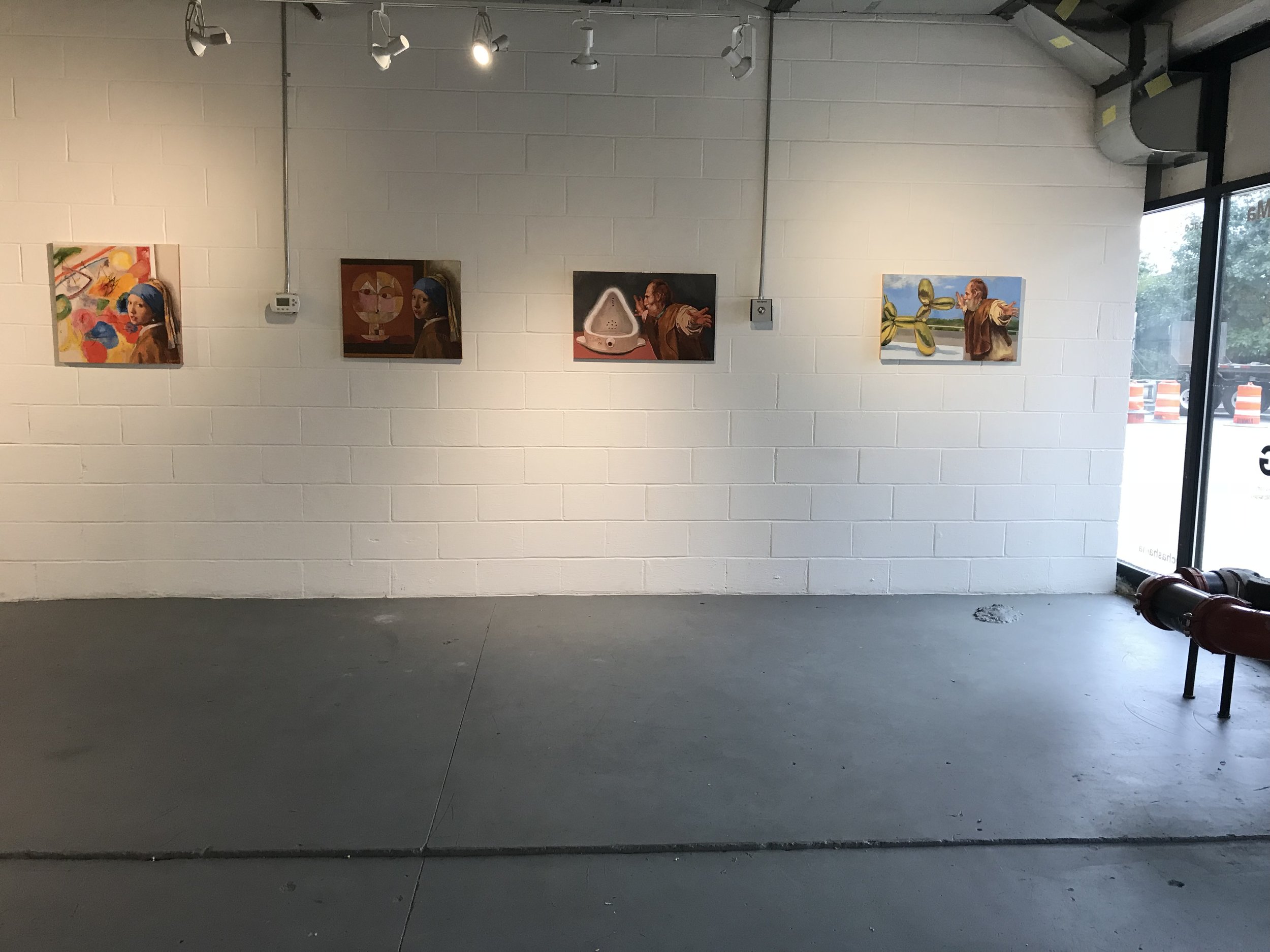
CLASSIC NOUVEAU
Curated by Jenny Mushkin Goldman
Presented by LatchKey Gallery at One Brooklyn Bridge, Brooklyn, NY
October 27 - November 25, 2018
LatchKey Gallery is pleased to present Classic Nouveau, curated by Jenny Mushkin Goldman, on view October 27 – November 25, 2018 at the Chashama Space, One Brooklyn Bridge.
With works by Russell Connor, Peter Daverington, Ryan Frank, Ashley Zelinskie, and Darryl Westly, Classic Nouveau explores notions of archetypes and innovation through a dialogue with “the classics” from antiquity up through the present.
What does it mean for something to be “a classic?” The genesis of this concept can be traced back to Ancient Rome, when artworks from Classical Greece were looked back on as the apotheosis of culture and copied extensively. Ryan Frank is in direct dialogue with Classical Antiquity, wrapping his wall and freestanding sculptural forms with photographs of ancient Greek and Roman art, deconstructing images from the past for an elevated consciousness of the present. His inclusion of mirrored copper surfaces reflects to the viewer’s their own image and places them within the context of history, thus confronting them with their own mortality.
When Ancient Roman artists appropriated Classical Greek imagery their work was simultaneously infused with other influences, from the Hellenistic period to their own native italic visual culture. The result of this eclecticism was artwork that transcended mere copying to become distinct and original. Russell Connor practices appropriation, what he humorously describes as “creative piracy,” from the canon of western art history by juxtaposing imagery from two or more masterpieces to create entirely new compositions with complex narratives ranging in theme from scholarly to political while always brimming with wit. His motto is "Copy, and Be Original -- Be Serious, and Make People Smile." For instance, his work Club Tahiti combines Paul Gauguin’s depiction of Tahitian women with Renoir’s members of the European bourgeois to create a new work examining colonialism and the Western fascination at the time with what they considered “primitive.” Ashley Zelinskie’s reproductions of similar works by Gauguin reclaim the images of the women depicted from the predominantly male gaze by reinterpreting the works from her female perspective with new technology. Her laser cut works featured here reconstruct Gauguin’s vahine paintings with the hexadecimal computer code from their high resolution, digital images. The finished result are simultaneously accurate reproductions of the original and innovative, optically dazzling compositions that can be interpreted by humans and computers alike.
From up close, Darryl Westly’s large painting appears to be an abstraction of earthy hued liquescent shapes. With some distance, however, the forms crystallize into an assemblage of elements from Peter Paul Rubens’ Venus and Adonis, Paul Cezanne’s Three Bathers, and imagery from Westly’s memories of landscape of Lebanon. Westly layers pastiche with personal history to reflect on the similarities between history and the present. Peter Daverington imbues the old masters with a contemporary edge by embedding his meticulous reproductions with hard-edged details and finished with gossamer, graffiti like swirls. By combining spontaneous gestures in a street art style and surprising, surrealist touches to classic imagery, such as the religious scene of angels in the featured painting, Daverington hints at erasing the masters, upending the customary notion that the works must be approached with solemn reverence.
